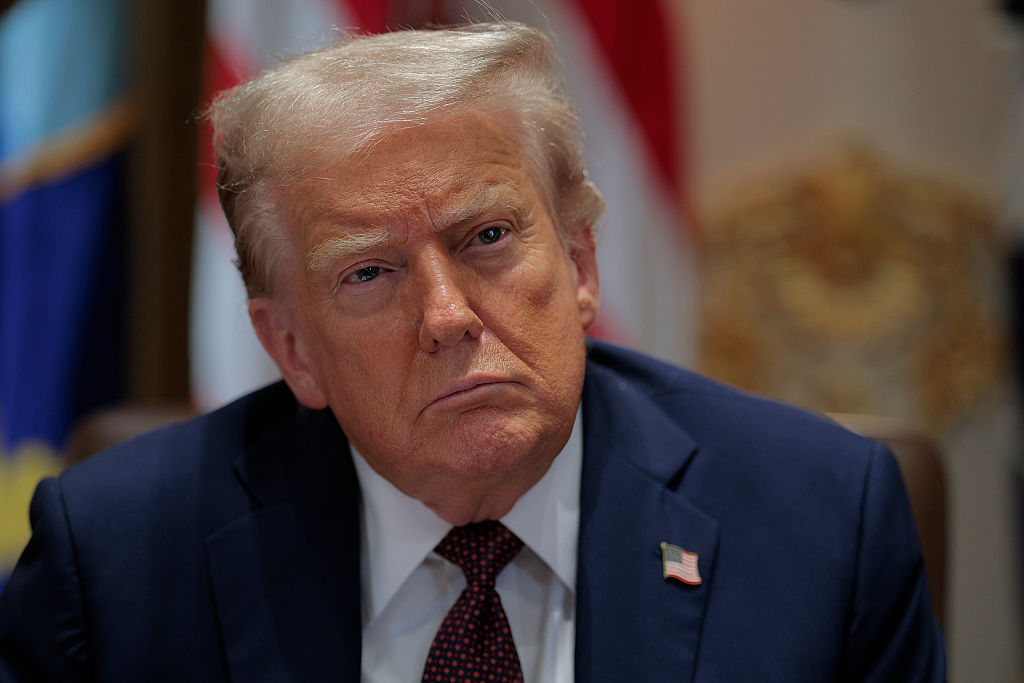In a move supported by Vermont’s socialist champion, Senator Bernie Sanders, President Donald Trump has arranged for the federal government to become the single largest shareholder of Intel Corporation. All for national interest, according to the White House.
Secretary of Commerce Howard Lutnick announced that the deal gives the government “a piece of the action.” Is it in fact a piece of the action, or a disaster to come for the American business community?
Created in 1968, Intel is an American multinational technology company that designs, manufactures and sells semiconductor chips and related products. Following its early successes, it has been in decline as a result of bad management decisions for the last 20 years or so.
The full terms of the deal include the federal government taking a 9.9 percent stake in Intel, utilizing $5.7 billion from the Chips Act, a $3.2 billion grant from a national security program, and $2.2 billion by retroactively treating CHIPS Act grants as an equity investment. The federal government purchased 433.3 million shares of the corporation at $20.47 per share, a substantial 20 percent discount from the shareholder price.
In early August, following up on Intel CEO Lip-Bu Tan’s Senate testimony before Senator Tom Cotton of Arkansas, President Donald Trump became publicly vocal in criticizing Tan, accusing him of being “highly conflicted” in view of his investments in hundreds of Chinese tech firms – at least eight of which have ties to the Chinese military – asking him to resign immediately as Intel’s CEO.
Tan then met with Trump, and, as Trump described it, the CEO “walked in wanting to keep his job, and… ended up giving us $10 billion for the United States.” During this voluntary conversation between Trump and Tan, the federal government became the single largest shareholder of Intel Corporation.
According to the deal, the feds are a passive investor with no time limitations on their holdings. The agreement does not give Intel the option of repurchasing the shares on a future event or date. While the government has no board or governance rights and will vote as directed by the board of directors, with limited exceptions, the exceptions are worth noting here.
What would limit the federal government from voting however it wants to? It’s common sense to realize that any displeasure the government may have with Intel’s business will be easily communicated to the C-suite before a shareholder vote is held.
The answer is in the terms of the deal which provides the government with the option to purchase an additional five percent of Intel, with a five-year warrant at $20 per share, if the company ceases to own at least 51 percent of its current foundry business segment. That means Intel is highly incentivized to stay in the semiconductor manufacturing business, even if it’s not the most business-optimal decision. Therein lies the rub in a transaction where the government takes a massive ownership position in a corporation for an ostensibly public rationale of national security. With this deal in place, how will Intel balance its obligations to its shareholders, employees, and customers in future business operations?
Everything Intel does will now be subject to the need to please its largest shareholder, the US government, and its multitude of interests that will likely lead the company to make political, rather than business, decisions. Yet Intel’s legal duty is to secure the largest possible profit for all its shareholders. It’s as if stakeholder capitalism – where companies consider the interests of all stakeholders rather than focus solely on shareholder profits – has now entered the economy through a Republican president’s machinations. Interestingly, the outspoken conservative foes of ESG investing – an investment strategy based on a company’s environmental, social, and governance performance, which also leads companies away from serving their shareholders – have had relatively little to say about this transaction.
How then does Intel reconcile these things? An early indication may be seen in the company’s recent SEC filing, where it disclosed that the deal dilutes shareholders’ stock, voting and other governance rights due to the issuance of discounted shares to the government. No shareholder approval was sought for this transaction to occur. Notably, Intel also disclosed that this deal may limit future transactions that could be beneficial to shareholders. Bingo.
Another problem Intel faces is how foreign governments will treat the company. Will Intel be viewed as an extension of the American government and its interests, resulting in additional scrutiny, regulation, fees or being blocked outright from doing business in certain countries? Roughly 76 percent of Intel’s revenues in 2024 were from international business. Intel disclosed these risks in the same SEC filing, given the clear risk factor here. These problems are merely the tip of a massive iceberg, one that could reshape not only Intel or the semiconductor industry but also other sectors of the economy.
President Trump said the deal would only be opposed by “stupid” people and that he wants to see many such deals made for the country’s benefit. Secretary Lutnick added that we need an American champion in the semiconductor manufacturing industry, given the apparent threat from China to invade Taiwan, a country which produces most of the world’s semiconductors, including the most advanced forms of chip manufacturing. Although compared to Taiwan, Intel is a weakling in the semiconductor industry, not a champion. And Intel’s stock price appears to be negatively correlated with the recent announcement of the government’s involvement in the company.
When the CHIPS Act legislation was first announced in 2021, it promised Intel potentially billions in subsidies to build semiconductor foundries in the United States. Intel’s stock was valued at $50 per share at that time. In August 2022, when the CHIPS Act was introduced into law, Intel’s share price had dropped to $35; recently, it has been trading under $20 per share before increasing to around $24 per share.
Before the government’s intervention, Intel had fallen behind in AI technology, missed the mobile computing revolution, and had gradually but steadily lost ground to semiconductor competitors over the last decade. Yet, a company that wasn’t meeting market needs, and seemed headed for a serious business reorganization to survive has now locked itself into chip manufacturing to please the government and secure a much-needed financial lifeline.
American taxpayers need to understand that Intel is now too big to fail. For it to succeed, it needs to secure customers who have previously not been forthcoming for its chip manufacturing business, among other business lines.
Will other likely companies for these customer relationships now receive pressure from the Trump administration to sign long-term contracts with Intel, America’s new champion company? Is President Trump’s other corporate deal with Nvidia, allowing the company to resume its exports of banned AEI chips to China in exchange for a cut of its sales, a harbinger of future things to come? Most importantly, will foreign companies avoid doing such business in America in the first place to escape any coercion?
To save Intel, a Republican president has turned an American Fortune 500 company into a public utility. Surely there are better ways of serving national security than by taking equity positions?
What’s next? Which other companies will now want to become American champions?


























Leave a Reply